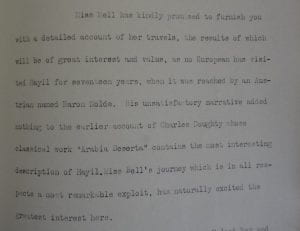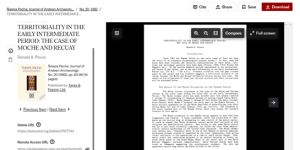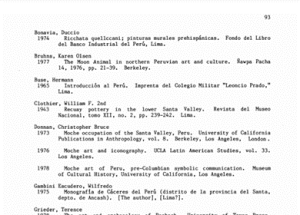New year, new me, a common motto stated in thousands of minds throughout the world as we cycle back to the month of January, marking the beginning of a new or fresh start for many of us. Archaeologists have a unique skill set that allows them to become a new and different person when placed in varying situations. Not only are archaeologists’ explorers of what lies hidden beneath the earth, they are detectives, determining what recovered objects might have once been, they are rebuilders, putting pieces of the past back together to form a larger image, they are adventurers, willing to go to some of the hottest or coldest places on earth to find what has been lost, they are educators, historians, protectors of knowledge, and seekers of truth. Archaeologists have the ability to be placed in new roles and locations, all the while immersing themselves in new cultures, researching the site they are working on, and even learning dead languages. These are probably all contributing reasons (along with being someone who naturally roves and travels the rolling hills and fields of the globe without many suspicions being thrown their way) that archaeologists have been used as spies! A little-known fact that sounds like something out of a novel or from the big screen, but a truth, nonetheless!
Using his archaeological excavations at the Syrian site of Carchemish as a cover during the first World War, British archaeologist Thomas Edward Lawrence, or Lawrence of Arabia, worked for British intelligence, observing German progress on a railway line that connected Berlin and Baghdad. In 1913, along with fellow archaeologist Charles Leonard Woolley, he was sent to Sinai as part of the Palestine Exploration Fund, as a cover, while they collected military topographical data.

A note from Sir Louis Mallet to Sir Edward Grey, May 20, 1914, regarding Gertrude Bell.
Gertrude Bell was a resource to the British intelligence’s Arab Bureau around the same time, contributing valuable information on Egyptian geography and even spying on Iraqi tribal activities around Basra. Her travels through the Arabian desert from January to May in 1914, constructed reports with valuable information, and prepared her for what more she could contribute to the intelligence departments when she was sent to Arabia after war broke out a few months later.
A commonly recognized archaeologist-turned-spy for a time, is American Mayanist Sylvanus Morley. In 1917 he was not only taking pictures of an old Spanish fort and touring archaeological sites in Honduras which covered more than 2,000 miles, but he was also on the hunt for German agents, shortwave broadcast stations, and submarine bases.
During the second World War, American archaeologists began to take part in espionagesque work, relaying linguistic and geographical information to offices like the Office of Strategic Services (OSS), while some even used their areas of expertise as fronts. Archaeologist Samuel Lothrop was one such person; chosen to spy while working in countries such as Costa Rica, Mexico, British Honduras, and Guatemala. Under the Special Intelligence Service (SIS), a Federal Bureau of Investigation (FBI)-supervised foreign intelligence division in Central and South America, he not only was trained in mail drops and secret codes, but he was also sent to Peru to supposedly carry out archaeological research at Lima’s National Museum, all the while handling local operatives, establishing a network of informants, collecting intelligence, and following political developments.

Tennis star, William J. Clothier II was turned into an archaeologist by the SIS and Harvard to allow him to gain access to the Peru in the early 1940s. He even “published” an article on Andean Recuay pottery, ghostwritten by an American archaeologist; this article has been cited before without question by several scholars! After spying in Chile and Cuba, and after the war ended, Clothier joined the Central Intelligence Agency (CIA).
Even during the Cold War, the CIA was not only archaeologists, but also art historians, and other academics in various fields, for CIA intelligence-gathering purposes. There have been many other archaeologists-turned-spies throughout history, such as Rodney Young, James Henry Breasted, Dorothy Cox, Virginia Grace, and more; some history has forgotten, or their names never revealed, but their risks and efforts should not be forgotten or trivialized.
However, becoming a spy may not be as adventurous or exotic, like something out of a movie, as one may think. In 1970s, geologist Jon Kalb was falsely accused of being a CIA operative. This threatened the safety of his family, as well as himself, and even harmed his reputation, but he was able to win a lawsuit against the National Science Foundation, who played a part in the rumors that led to the suspicion surrounding him. The fear today for contemporary archaeologists is that they could be put in harm’s way based on historical ties between archaeologists and intelligence agencies. Some suggest that to avoid accusations of spying, archaeologists and professional archaeological organizations should “forswear connections to intelligence agencies for the safety of themselves and their colleagues,” to show that archaeologists are committed “to scientific rather than political goals” (Price 2003).
Should archaeologists assist intelligence agencies for the good of their country or even the world? Or does this shed doubt on the legitimacy of the work that our field is conducting? What do you think?
Check out some of these sources for more information:
BOOKS:
Classical Spies: American Archaeologists with the OSS in World War II Greece by Susan H. Allen
The Archaeologist Was a Spy: Sylvanus G. Morley and the Office of Naval Intelligence by Charles H. Harris III and Louis R. Sadler
NPR PODCAST:
Archaeology Spies with Neal Conan and David Price (author of: Threatening Anthropology: McCarthyism and the FBI’s Surveillance of Activist Anthropologists)
HISTORY HIT VIDEO:
Archaeologist Spies of World War One with Dr. Amara Thornton
JOURNAL ARTICLE:
Spying by American Archaeologists in World War I by David Browman
WEBSITE ARTICLE:
The Perfect Spy by Nancy Brokaw
Follow IUP Anthropology on Facebook, Twitter, and Instagram
References:
https://www.theguardian.com/science/2003/sep/04/research.artsandhumanities#:~:text=In%20the%20second%20world%20war,contributions%20to%20the%20war%20effort.
https:/blog.nationalarchives.gov.uk/digging-king-country/

